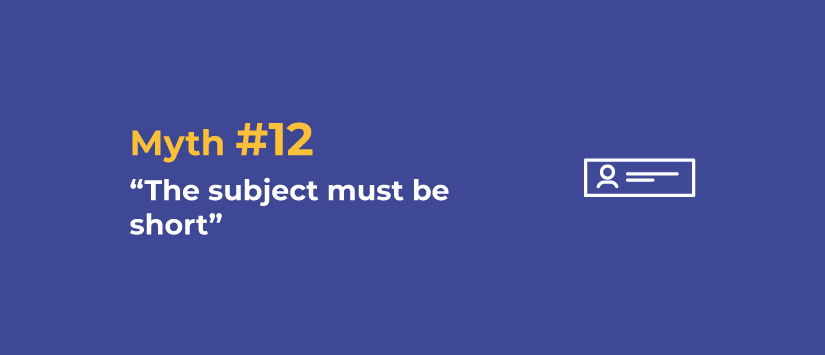Category: Email Marketing

The subject line is a key element in email marketing because it is the key to getting the message opened. There are other factors, such as the sender or the subject of the communication itself, but the subject line is responsible for "selling" the email so that it first achieves openings and then conversions. It is so important that several false myths circulate about it, not only that it must contain emojis, but also that it must always be short. This is not the case; it can be adapted to different situations!
The sentence you just read is 62 characters long. As a title or subtitle sentence, nothing would indicate that it is too long, but the perspective changes when you place it in another channel and then yes, it is too long as an email subject.
In general, 50 characters is the recommended maximum to be readable in full on most desktop email managers, but this number drops to 30 on mobile devices where screens are much narrower and the width needs to be adjusted. Therefore, continuing with the example, to use the subtitle sentence in a campaign, we would have to rephrase it, remove some words or use synonyms with fewer letters.
The minimum for a subject line would be 10 characters, although the truth is that it would be difficult to arouse interest because it would be reduced to almost nothing (perhaps the name of the brand and a date if it is a newsletter). A short subject line should have four or five words that do not exceed 30 characters to ensure that the sentence will not be cut off at the end if it is read from a mobile phone. If we exceed 50 characters, we risk having subscribers who, even from the comfort of their computer, may not understand the message we want to convey, which can affect the statistics of openings.
In the Acrelia campaign editor, you will see a red message if you exceed that number to help you write the subject within that limit.
The recommended number of characters is determined by the users themselves because it influences where it is viewed from. If you check your statistics, you can see which devices are most used in your contact list and consider how to optimise it to always have the highest percentage of openings.
There are also other reasons to keep your subject line short:
Of course, if we say that it does not always have to be short, it is because there are also reasons to construct a subject that is closer to the maximum recommended number of characters:
Choosing whether to use a short or long subject line can vary depending on the type of mailing you are sending. For example: for a new product launch, a short one may be a good choice while a cross-selling campaign requires a bit more context and it is better to use a few more words.
The difference between a perfect subject line for all devices and one that is too long and that some subscribers may not be able to read completely is perhaps just a couple of words. To make the most of the 30-50 characters, you can write it with the following in mind:
The subject line is also an important element for the message to go to the spam folder, so when choosing the words, you should not only think about their length, but also about those that could be considered spam. For example: writing in all capital letters as if you were shouting, overusing exclamation marks to mark a promotion or including "free" may cause your message to fail some spam filters. Rewrite it so that it is understood even if you remove those words, always keeping in mind the total number of characters.
Download the ebook "Email marketing myths" to learn about other myths you should stop believing in.
Do not miss anything from our blog and join our Telegram https://t.me/acrelianews
Haven't you tried Acrelia News yet?
If you like this post, you will like much more our email marketing tool: professional, easy to use.